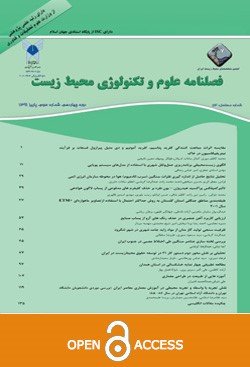-
-
List of Articles
-
Open Access Article
1 - Analytical-comparative analysis of organic architectural works in Iran (Second Pahlavi period)
Alaleh Samir Maryam Cheshme Qassabani Hosein Karim Abadi -
Open Access Article
2 - Using Landscape Metrics and Remote Sensing to Analyze Land Changes and Land Degradation (Case Study: Shirin Dare Watershed Basin-North Khorasan province-Iran)
Zahra Parvar Kamran Shayesteh Morteza Behzadfar -
Open Access Article
3 - An integrated model for determining the level of HSE culture in the gas industry
manizheh afrashtehfard parvin Nassiri Jamal Ghodusi Nabiallah Mansouri -
Open Access Article
4 - Providing a Building Optimization Model to Counter the Negative Effects of Climate Change to Reduce Energy Consumption
Arda Zarei Sina Fard Moradinia -
Open Access Article
5 - Studying the effect of beta-cyclodextrin natural polymer for improving dyeing condition and reduction of environmental pollution
akhtar mousavi ahmad akbari seyed kazem mousavi -
Open Access Article
6 - Adsorption of Nickel Ions from Aqueous Solutions using Immobilized Silica Nanoparticles onto Zeolite 13x
Tahere Mardani Elham Ameri -
Open Access Article
7 - The relationship between the diversity of plant species and environmental factors in Vezg region of Yasouj
Roghaye Aghaei سهراب الوانی نژاد Reza Basiri Roghaye Zolfaghari -
Open Access Article
8 - Investigating the effects of nuclear disarmament on climate change from the perspective of international law
Meisam Norouzi Mehdi Eskandari Khoshgu -
Open Access Article
9 - Identify the dimensions of marketing strategies in ecotourism in order to achieve sustainable economic, social and environmental development; Phenomenological research
hosein rahimi kelver iman ghasemi hamedani -
Open Access Article
10 - Modern Structures, Predisposing Factors for the Sustainable Development of Rural Tourism in Mazandaran, Focusing on Eco-Tourist Residences
Mahsa Haghani Sahar Majidi Hatkeloee
-
The rights to this website are owned by the Raimag Press Management System.
Copyright © 2021-2025







